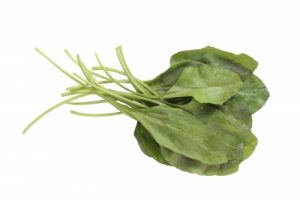 According to the CDC, food-borne illness sends 128,000 Americans to the hospital each year and kills 3,000 annually. A report released just this week based on 10 years of research links food borne illness to leafy greens. The authors did not cite specific foods (i.e. whether or not kale is worse than spinach).
According to the CDC, food-borne illness sends 128,000 Americans to the hospital each year and kills 3,000 annually. A report released just this week based on 10 years of research links food borne illness to leafy greens. The authors did not cite specific foods (i.e. whether or not kale is worse than spinach).
I know what you may be thinking. But diets rich in leafy greens may help reduce my risk of cancer, are full of fiber, and can help me lose weight! Should I stop eating these cancer-preventative power foods?
Not so fast. The CDC is not recommending that consumers avoid leafy greens, especially healthy choices like produce. Instead, educate yourself, be aware, and be smart about your choices.
But before we go any further, there’s one note I need to make.
If you are currently on cancer treatment – such as oral chemo, IV chemo, or radiation – you may be told at some point by your treatment team to not eat raw fruits and vegetables. This recommendation is sometimes given if one type of white blood cell count in your blood (also referred to as “ANC,” or absolute neutrophil count) gets very low.
I can’t say that this recommendation is science or “evidence-based”, but the belief (as I will call it) is that if your ANC is so low that your body can’t fight off infection, then we shouldn’t introduce any raw foods that may be more likely to carry bacteria and make you sick.
This makes sense; however, it’s just not very likely to happen– especially if you are cautious and smart about food preparation.
There are many steps you can take as a consumer and/or cancer fighter to reduce your risk of food-borne illness (no matter what your ANC levels are) and still enjoy leafy greens as part of your meals each week:
Want to learn more about food safety? Visit Food Safety.gov.
Image Courtesy: FreeDigitalPhotos.net